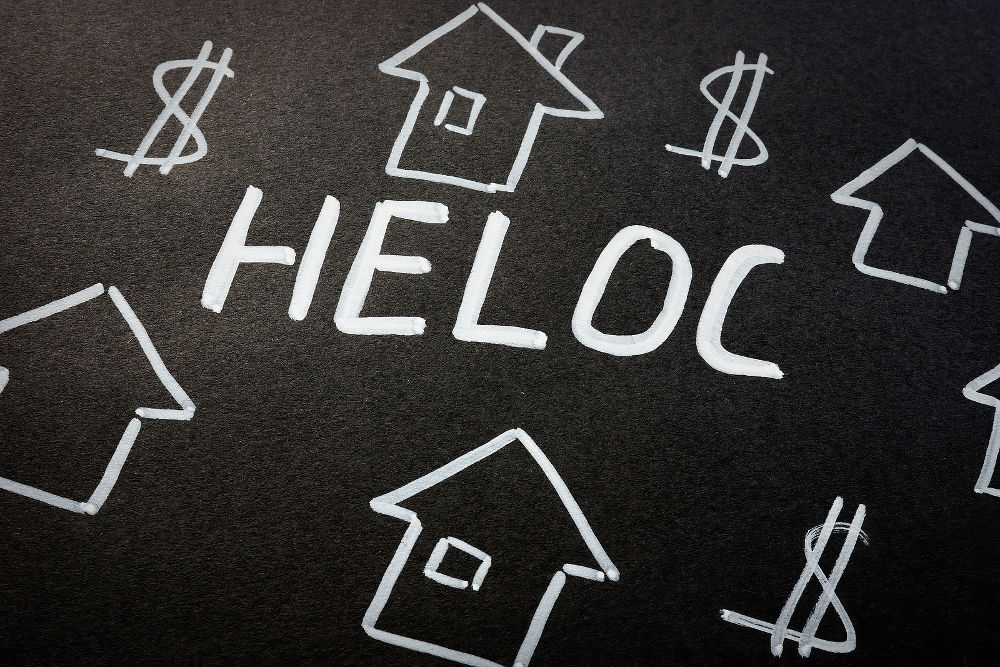In the world of property investment, it’s all about making your money work harder for you, and HELOC – a Home Equity Line of Credit – is a term you’ve most likely encountered thanks for its ability to help you do just that.
Essentially, it’s a rather clever financing strategy that allows you to release equity in a property without actually having to sell it, which can make it easier to fund renovations as well as expanding your portfolio sooner, rather than later.
It might seem like an overwhelming concept, but used in the right way, it can significantly improve your returns and help to boost your overall revenue in the long-term. All that’s required is a little knowledge and understanding, and here, we’re demystifying it for you so that you can finally start using it to your advantage.

What exactly is HELOC anyway?
As we’ve touched upon, HELOC is a financing strategy offered by SoFi and a variety of other lenders, and is used by savvy investors to leverage the equity within properties as collateral for additional credit. That means that if a property within your portfolio is worth £200,000 at current market value, but you’ve yet to pay half of this amount off in mortgage repayments, you can still use the £100,000 equity you do have to borrow against.
So, instead of selling the property, you can approach a lender to borrow funds, with your existing equity up your sleeve as your ace card, and tap into this to expand your investment portfolio or to fund renovation work on the property itself to boost its overall value.
Navigating interest rates
Like most home loans, HELOCs do still incur interest rates, and often these are higher than mortgage rates – but when compared to your typical credit card interest rates, they are lower and thus more favourable. More often than not, they’ll sit somewhere just under the five percent mark, although this of course does vary between lenders.
During the draw period, which is generally somewhere between five and ten years, most HELOCs only require you to repay the interest, which offers more room to manoeuvre in the shorter term. Once the draw period has ended, you’ll then have to begin repaying both principal and interest, during what is known as the official ‘repayment period’.
When you’re applying for a HELOC, you’ll want to bear all of this in mind to ensure you’re getting the most favourable terms. Be prepared to research, and shop around if you need to.

Eligibility criteria
Like most types of borrowing, HELOCs require that you meet certain eligibility criteria in order for your application to be successful. Firstly, you must hold a minimum of 15 percent equity within the property you’re seeking to borrow against, and you must also have a credit score of at least 620. You’ll also need to be able to demonstrate your ability to make the necessary repayments, and that you have healthy cash reserves, and a maximum combined loan-to-value ratio of 80 percent.
If you’re looking to take out a HELOC on a rental property, the criteria is often stricter due to the risk being perceived as higher. For this type of loan, you’ll need slightly higher equity, at a minimum of 20 percent, and your credit score must be no lower than 720, although of course the higher it is, the better your chances. In addition, you’ll need to be able to show evidence of a stable tenant turnover and sufficient rental income, as well as a realistic assessment of future rental viability.
Making a HELOC work for you
Securing a HELOC is only half the task though, and once you have done so, you’ll need to put some serious thought into how to best make it work for you in terms of both your short- and long-term objectives.
There are various ways you may wish to use yours, portfolio diversification being one of the most common. You might also want to pour the money into upgrading your property to increase its value, or expand your portfolio geographically by investing in properties in new locations. Or, finally, you may also wish to utilise your HELOC to consolidate any existing debt you have and minimise the amount of interest you’re paying.

The good and the bad
There’s no denying that HELOCs can be hugely beneficial to those who can afford them and who use them in the right way, but it’s wise to be aware of both the advantages and disadvantages before going ahead. Although they allow investors to leverage equity without upfront capital, make interest-only payments, and enjoy reusable credit lines, drawbacks like eligibility requirements, variable interest rates, and loan repayment obligations shouldn’t be ignored.
The bottom line
HELOCs can be used as a handy financing strategy for property investors, facilitating portfolio expansion without the need to liquidate any of your existing assets. By leveraging existing equity, you can take advantage of new opportunities and boost the value of your current portfolio, but make sure you have a carefully considered plan in place before taking a HELOC out to ensure that it’s the right decision for you.
Disclaimer: Investing money carries risk, do so at your own risk and we advise people to never invest more money than they can afford to lose and to seek professional advice before doing so.





















